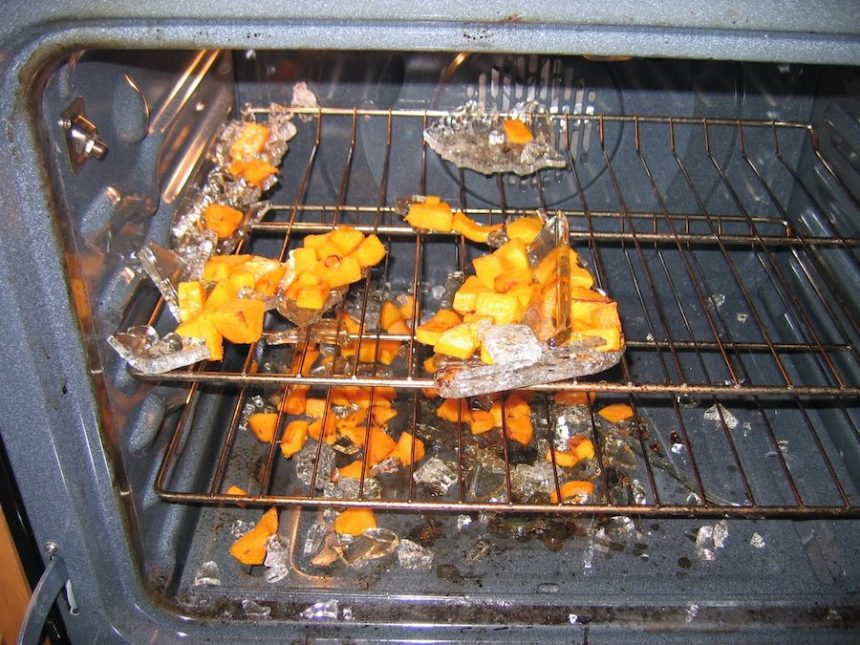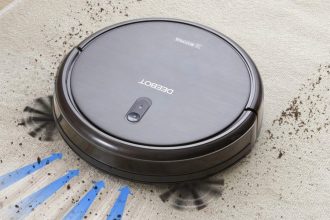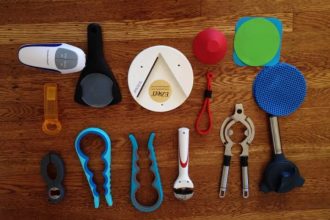Pyrex can be used in the oven, but it’s important to note that not all Pyrex is oven safe. For an uncoated piece of pyrex cookware, should you decide to use it in the oven, make sure there are no cracks or chips and also keep your eye on the temperature. You should never put any coated pieces of pyrex cookware into a heated oven because this could cause damage to both the glass and coating.
What Is Pyrex?
PYREX is a brand name of the oven- and microwave-safe glassware owned by the Corning Company. It became popular in households during the 1950s where it was used to store food after being heated in an oven for dinner. Then, during the early 1960s, PYREX was introduced as bakeware allowing users to place their food directly in the oven.
Taking Care When Using Pyrex
PYREX glassware is made of borosilicate glass, which makes it stronger than ordinary glass. It does not shatter like traditional glass when dropped or exposed to extreme changes in temperature. However, PYREX should still be used carefully to avoid breakage and injuries during handling.
Bring To Room Temperature
Before placing food in the oven or microwave, make sure to allow your PYREX to reach room temperature. Placing cold dishes in an oven for cooking may cause it to shatter due to uneven heating.
What Type Of Glass Is Pyrex?
Glass is a hard, brittle material composed of silica and other materials. Traditional glass is made of soda-lime-silica. PYREX or borosilicate glass, on the other hand, contains boron which allows it to handle temperatures up to 530 degrees Fahrenheit (275 degrees Celsius).
PYREX glassware was first introduced in the early 1900s. It is more resistant to thermal, physical, and chemical shock than traditional soda-lime glass by balancing high-temperature resistance with chemical durability.
Materials And Environment
There are three main types of Pyrex: clear borosilicate glass intended for use in ovens or microwaves, colored borosilicate glass intended for use in ovens, and tempered soda-lime glass intended for stovetop cookware.
Oven-safe Pyrex should be used in the temperatures mentioned on the product packaging, but other Pyrex products are not designed to withstand higher than normal cooking temperatures. There may also be some risk of breakage if you attempt to move Pyrex products while they’re hot.
There are some risks associated with using any type of glass in the oven, including breakage and chemical leaching between materials. It’s important to avoid rapid cooling after removing Pyrex dishes from an oven or other heat source since this can cause thermal shock, which may lead to breakage.
PYREX should only be used in a microwave if the product specifically says it’s safe for use in microwaves. In addition, you shouldn’t heat PYREX directly over an open flame, such as a gas stovetop burner.
Can Pyrex Go In The Oven?
The short answer is yes, it’s possible to cook with pyrex but there are some exceptions. Pyrex glassware should never be used for cooking or baking at high temperatures on the stove top, under a broiler/griller, on a cook top, or in a microwave. If you’re unsure about using glassware for cooking, always check the temperature recommendations on the glassware before using it for food preparation.
Can Pyrex Mixing Bowls Go In The Oven?
Pyrex mixing bowls should never be used for cooking or baking at high temperatures on the stovetop, under a broiler/griller, on a cooktop, or in a microwave. These are designed to withstand high heat but only when it’s part of the process of actually preparing your food. Pyrex glassware is safe to use with your food when being used in the oven – however, it’s important to not use Pyrex exclusively for both cooking and baking.
Conclusion
Pyrex glassware is safe to use in the oven, however it’s important to not use Pyrex exclusively for both cooking and baking. When using Pyrex glassware for food preparation, never place it directly over a flame or other heat source that exceeds the recommended temperature. If you’re unsure about using pyrex dishware, always check the temperature recommendations on the product before using it. Pyrex can be used as a substitute for other glassware, but there is always the risk of breakage that comes along with any type of glass dishware whether it’s Pyrex or not.







